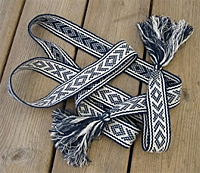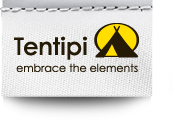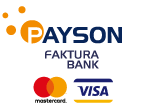Please choose your country or region so we can show you the most relevant content.
It looks like you are in United States? Accept
Africa
- Algeria
- Angola
- Benin
- Botswana
- Burkina Faso
- Burundi
- Cabo Verde
- Cameroon
- Central African Republic
- Chad
- Comoros
- Congo
- Côte d'Ivoire
- Djibouti
- DR Congo
- Equatorial Guinea
- Eritrea
- Eswatini
- Ethiopia
- Gabon
- Gambia
- Ghana
- Guinea
- Guinea-Bissau
- Kenya
- Lesotho
- Liberia
Asia
Australasia
Europe
- Albania
- Andorra
- Austria
- Belarus
- Belgium
- Bosnia and Herzegovina
- Bulgaria
- Croatia
- Czechia
- Denmark
- Estonia
- Finland
- France
- Germany
- Greece
- Greenland
- Holy See
- Hungary
- Iceland
- Ireland
- Italy
- Latvia
- Liechtenstein
- Lithuania
North America
Middle East
THE TENTIPI WAY
The vision behind the brand
In this video Bengt Grahn, founder and CEO of Tentipi, shares the vision that is behind our brand and everything we do.
The vision behind the brand
Corporate Responsibility
Responsibility has always been a guiding-star for us at Tentipi. We believe that we must take responsibility for our environment, for each other and for the future.
Corporate Responsibility
We are striving to run a truly sustainable business:
• Run a profitable business based on good ethics.
• Support long-term sustainable development through our activities.
• Use company funds to support environmental and humanitarian organizations.
Our Corporate Social Responsibility (CSR) work is a process in which we are continually trying to find opportunities that are in harmony with the earth and all creatures that live on it.
Our ecopolicy
As a corporate enterprise, Tentipi does not only strive to provide first-class products. We want to do so in a way that promotes long-term sustainability and that shows consideration for our fellow beings, future generations and the planet we share.
In order to contribute to positive development, we have formulated an ecopolicy that is an important and self-evident part of our decision-making processes, and a tool we use when cooperating with our partners and suppliers.
Tentipi's ecopolicy is based on the understanding that we live on a planet with limited resources and that there is also a limit to how far nature can cope with the environmental strain and stress that human activities cause. We strive to spread this awareness within our company and we take action accordingly.
One important step is to reduce our consumption of energy and raw materials. One way of achieving this is to apply a long-term perspective to product development, e.g. by making constructions that increase a product's length of life and by finding materials that are highly durable.
Another important step is to use materials and methods of production that are as ecofriendly as possible. One example of this is that we have started looking for alternative materials that have less impact on the environment. The challenge for us is to make these materials fulfil our stringent requirements regarding the performance of our products.
A third and equally important step is to re-use or recycle all materials that can be reclaimed. To this end, we sort out waste as much as possible in our various departments.
Steps already taken by Tentipi to reduce strain on the environment:
• We have underfloor-heating in our Swedish production premises (which reduces energy consumption and increases comfort).
• We sort out and recycle waste.
• We buy ecolabelled/fair trade/locally produced products (coffee/fruit) for our employees' coffee breaks.
• We take responsibility as a producer of packaging by being affiliated with REPA. (The fees finance the national collection and recycling of packaging.)
• We use low-energy bulbs.
• We use ecolabelled cleaning agents.
• In our Swedish production premises, we use cleaning equipment that does not require cleaning agents.
• We use ecolabelled paper for everything from printing paper to catalogues.
Environmental objectives for the coming years
• Start to climate compensate our car and air journeys. (In the long-term, we will look over our journeys in order to make them more ecofriendly.)
• Learn about, look for and develop alternative materials that have less impact on the environment.
Our CSR work is a process where we are continually striving to operate in harmony with the environment. Green business is good business!
Swedish Society for Nature Conservation
Tentipi is a sponsor of the Swedish Society for Nature Conservation, Sweden's largest organization for the preservation of nature and the environment. This means we support the society's long-term work for sustainable development, a better climate and more healthy nature.
The Swedish Society for Nature Conservation's goals are to:
• Save all forms of life in nature.
• Promote human beings' good health.
• Encourage global solidarity.
The Swedish Society for Nature Conservation is a non-profit and non-political organization. The society spreads knowledge, maps environmental threats and endeavours to find concrete and constructive solutions to problems. The society strives to influence politicians and public authorities, at both national and international levels. Moreover, the SSNC is behind one of the world's most challenging ecolabellings, namely "Good Environmental Choice" (Bra Miljöval).
www.naturskyddsforeningen.se/In-english/About-us
SOS Children's Villages
Tentipi is a sponsor of SOS Children's Villages. We are helping to give orphans and abandoned children a home, a family and the opportunity to grow up in a secure and happy environment in the Chinese Children's Village Nanchang.
SOS Children's Villages' objective — to help children in need.
SOS Children's Villages is the only organization that uses the concept of the family as its basis for helping orphans and abandoned children. Its activities are based on long-range goals — to take care of children until they are able to manage on their own. The Children's Villages are the foundation for other projects, for instance, schools, medical clinics and social centres. By being given security, love, a sense of community, education and hope, the children have the opportunity for a better life so they can grow up and later be able themselves to improve the society they live in.
SOS Children's Villages are now focusing more and more of their work on preventive measures and on strengthening families. This means providing support to vulnerable families so that children do not have to be abandoned and made orphans on account of illness, poverty or some other reason. Some examples of family-strengthening measures are education, medical care or microloans to help start up a business or a farm.
SOS Children's Villages helps about 1 million people all over the world and is a non-political and non-religious organization that is striving to realize the UN Convention on the Rights of the Child.
SOS Children's Village Nanchang
The city of Nanchang is situated in the Chinese province of Jiangxi. The SOS Children's Village consists of twelve family houses, the village director's house, a house for the SOS aunts (family helpers who support the SOS mothers) and apartments for retired SOS mothers. There is also an SOS Kindergarten, which welcomes children from the neighbourhood too, and an SOS Youth Facility.
An SOS family consists of between seven and ten children plus an SOS mother, who all live together in one of the family houses. The SOS mother is the most important person in the children's life and she gives them the security they need.
The SOS Youth Facility comprises one accommodation unit inside the village and some flats outside. Young people often move to the SOS Youth Facility when they start a vocational training course or go on to higher education.
The children do not leave the village until they can manage independently and of course they are always welcome to come back home — just like in an ordinary family.
The Stratus story
Our pioneering approach has led us to break so much new ground over the years. This story charting the development of the Stratus is one example.
The Stratus story
It's been an interesting journey over more than two decades. From a moment of inspiration on the banks of a remote river in Lapland, to the unique shape, ingenious Swedish design, technical fabrics and modern engineering of our Stratus Nordic tipi. We hope you enjoy the trip.
Eaten alive
Surely there must be a better way? A tent that can have a fire inside, to cook, stay warm and keep away from the mosquitoes? The best tent in the world...
The light bulb goes on
Now we are 10 years on, in the village of Moskosel deep in Swedish Lapland, not far from the mosquito camp. One evening Bengt is standing on a chair, changing a light bulb in the church hall, and it was not just the lamp that lit up... "I'm going to start a business making Nordic tipis!", he thinks.
Over the years, Bengt's desire to make the best possible tent combined with his knowledge of the Sami kåta (the traditional home of the Sami people, indigenous to the area) became fused in that moment of decision. And so it began. Moskoselkåtan AB (since renamed Tentipi AB) was incorporated and Bengt was on his way.

Sami family around 1900
Learning curves
Armed with a set of cutting plans for a cone-shaped tent purchased from a local businessman (which turned out to be all but useless), and a huge dose of self-confidence, Bengt began teaching himself to sew, turning enormous pieces of cloth into large Nordic tipis.
At first, he did everything himself, from purchasing and sewing to marketing and selling. However, it did not take long before he employed his first worker. The tent production proved to be profitable and new products began to be developed.

Early Moskoselkåtan Nordic tipis
The first request for a truly giant Nordic tipi arrived, and Bengt made a deal to sew the canvas, with the poles being provided by someone else. Arriving on site to install the new tent (the day before it was needed) he was dismayed to see the trailer full of poles being driven on to site — they were anything other than straight; it would be quite impossible to use them. But the show must go on so, chainsaw in hand, Bengt went out into the woods to find tall, straight trees that would be suitable. He worked through the night, and by 5am, had cut and trimmed sufficient poles to build the frame. The canvas was fitted (it fitted perfectly), and the show did go on.
Teething troubles
Like so many early versions of new products, those early giant Nordic tipis had their problems. The poles were long and straight — yes — but they were heavy and brittle and snapped too easily if dropped or exposed to heavy wind. The tipis took a long time to build — 2 people for 8 hours. And the fitting of the canvas required some final bits of sewing on site, which meant Bengt had to be there to install every tent.
A chance meeting with a woodsman opened up the possibility of using a different type of timber that only grows in a narrow band of latitudes in the northern Scandinavian forests. It grew straight, was light, flexible and immensely strong. Experiments showed that it was perfect for the job, the strength and flexibility coming from the extremely slow annual growth rate (Stratus main poles are typically 100 years old when felled). The right trees are not so easy to find, though — individual trees have to be selected and felled by hand — a task undertaken in the Swedish winter by self-employed foresters. They head out into the forests, select, cut and trim the timber and drag it back to base behind their snowmobiles.
Build times were reduced and on-site sewing dispensed with following a radical redesign of the method for building the timber framework, and for getting the canvas on. So much of the redesign was brand new thinking that several patents and design rights were applied for, and granted.
The "Giant Hat"
The next big step forwards came in 1993. A Sami cultural organisation, impressed by the tents they had seen around, approached Bengt and asked him to create a 25 m x 50 m exhibition space to promote Sami products and Sami culture. That was a huge project to take on at the time, and it occurred to Bengt that he needed a Nordic tipi where the sides could be opened, so visitors could see the displays inside as they walked past. He had experimented the previous year in Stockholm with rolling up the sides of the tipi to achieve the same effect, but that meant losing an area of covered space, reducing the effective size of the tent. How else to solve the problem...?

Inside the first "Giant Hat" Nordic tipi
The idea to introduce expansion wedges into the lower half of the canvas came in another moment of inspiration; a practical idea to solve a specific problem but with huge positive implications as we will see later. If the wedges were tightened, the tent could be pitched like a standard tipi but, if they were loosened, the bottom half of the canvas could be raised up and supported on wooden poles to create a giant witch's hat shape. Opening the sides like that created more covered space under the tent, not less, and gave passing visitors an uninterrupted view of the inside of the tent.
The first "Giant Hat" Nordic tipi (since renamed Stratus) was duly made and used for the event... and it went down a storm. Copyright protection for the shape of the Stratus as a work for applied art was applied for and granted, although only for a limited period — it expires 75 years after Bengt's death!
Making connections
For the next leap forwards, we must look outside of Tentipi to an enterprising Sami businessman named Roger Rimpi. Roger had been exhibiting on the Sami exhibition stand and was especially impressed with the Stratus. He was the first to see the possibility of using the way the sides raised up to link the tents together to make a single larger structure. Later in 1993, he linked the first three Stratus together for an event at Stockholm zoo.

One of Roger's spectacular events
The Stratus had not been explicitly designed for linking, so those early links took some figuring out. But as more and more people began linking the tents, new products were introduced to support the linking, the Stratus itself was modified, and the linking techniques were improved, becoming more reliable and easier to teach.
This ability to link is what really sets the Stratus apart. It is possible to create all sorts of weird and wonderful shapes, and to make really large covered spaces. The record to date is 34 Stratus linked together to host a dinner for 2000 people.
More countries, more demands
Word spread about the Stratus and its ability to link to form larger structures, and tents were sold into more and more countries, and used for an ever-expanding range of events. Anything from an English Country Wedding to a Norwegian Ski Jumping Competition, from an Australian Beach Party to a German Music Festival, and many other uses in between.

Three Stratus Nordic tipis at a Norwegian ski jumping competition
With that increasing usage came increasing demands which needed to be met: new features for certain markets; different fire retardancy standards; the need for formal structural calculations.
Of all these, the selection of fabric has been the most challenging. There are plenty of tentmakers around the world making covers to fit some form of timber frame. But requirements for the Stratus are more extreme due to the sheer scale of the tent, and the extra demands of linking. It needs a fabric that:
Keeps the rain out when it is deliberately stretched tight against rustic wooden poles.
Isn't too heavy, so the tent can be built by hand, without using machines.
Is strong enough to cope with the stresses and strains that occur in a tent of this size.
Meets the fire standards in a number of different countries.
Does not shrink too much, or stretch too much.
Feels and looks right — PVC would not work (most large tents are made from PVC these days) because it would destroy the aesthetic beauty of the tents.
Has a low environmentally impact.
And many more.
Over the years, the globe has been searched for fabrics that meet the requirements. Hundreds of fabrics have been looked at, and many dozens tested before realisation dawned... there is no standard fabric that does the job. So it has been necessary to partner with a textile manufacturing company to develop a bespoke fabric that does. There's no doubt this will be an ongoing process as new standards emerge, and new countries begin to use Stratus.
Not finished yet
So we arrive at today, with a product packed full of features developed as the result of nearly 20 years experience of real world use, on real sites, and in real weather conditions.

The Stratus today
The journey doesn't stop here, though. There is an active, ongoing product development programme with 3 aims: 1) to introduce new products to use alongside the Stratus, extending its relevance to a wider and wider range of events; 2) to invent new ways to build, dismantle and link the Stratus more quickly without compromising safety; 3) to keep ahead of developments in standards relating to fire retardancy, structural stability and environmental impact.
The journey continues.
Tentipi Adventures
We like to practice what we preach. Every year we take groups into the Swedish wilderness for 3 days of snowmobiling, ice fishing and laughter…
Tentipi Adventures
Three fantastic days, filled with sunshine, snowmobiling, fishing and lots of laughter. That's how Tentipi Adventures can be summed up. Taunton Leisure, one of our wonderful UK Adventure Tipi retailers, joined a group from Germany and here's their report of the trip.
"The best thing about the trip was that everyone in the group got on so well. I can't remember any of us ever stopping smiling, from start to finish, and that had a lot to do with the fine reception we got from everyone at Tentipi," says Nick Baron from Taunton Leisure.

At Tentipi's office in Moskosel
After a few hours at Tentipi's office in Moskosel, we jumped into our cars and drove to Arvidsjaur where ten snowmobiles were waiting. For most of the participants, this was the first time they would drive a snowmobile but no doubt most of them now hope it wasn't the last!
"Driving a snowmobile was great fun and it never got monotonous. I could easily have driven another 100 km during our three-day trip if we'd only had more time," says Nick Baron.

How about this for "a day at the office"?
After going through safety aspects and stowing our luggage onto the snowmobiles, we drove off through forests and over frozen lakes. The temperature was a few degrees below zero and the sun was shining — almost as brightly as the faces of the participants! After just over an hour's drive, we arrived at the place where we were to pitch our two Nordic tipis and set up our base camp.
"The Nordic tipis were surprisingly simple to put up and use in the deep snow," says Simon Clark from Taunton Leisure.

Pitching a Safir 9
The tents were up and the base camp was ready but the sun had not yet gone down. We got back onto our snowmobiles because Patrik J Rönnbo and Konrad Persson from the Moskosel office wanted to show us something — the Guorbbabuovdda peak with its spectacular view and the sunset.

The Guorbbabuovdda peak
It was beginning to get dark and cold; the temperature had dropped sharply to minus 20. We drove back and gathered around the fire that Tentipi's German sales agent, Georg Haas, had got going. There, our evening meal was cooked for us, a Norrland speciality called "palt", small pieces of dumpling and pork, fried in a huge frying pan.

Cooking on the open fire
It wasn't actually that late when we went to bed in our Nordic tipis, two Safir 9 tents with stoves, but all that fresh air and the big portion of "palt" had made us long for our sleeping bags. Although we were all feeling the cold, the night went fine and we all had a good sleep which was quite a surprise to Nick Baron.
"I was a bit surprised that you can survive a night outdoors in minus 26 with a good down jacket, a sleeping bag and a stove," he says.
On Tuesday, the main activity was jig fishing and after an hour's snowmobiling through fantastic winter landscape, we came to a small lake where we were going to catch our lunch. Equipped with a jig fishing rod, everyone began to fish. The lake was supposed to be full of fish but none of them wanted to be caught!
The participants ran out of patience and one by one, they gave up. A few determined souls kept going and at about half past two, the first Arctic char was caught, a real beauty it proved as it was pulled up through the drilled hole. A few minutes later, a second fish was caught and soon our very late lunch was sizzling in the pan.

Happy fisherman but not so happy fish...
On Tuesday evening, we ate finely cubed reindeer meat in a creamy sauce with diced vegetables and potatoes — a real taste of Lapland. Over dinner, we chatted about all kinds of things: Tentipi products, physical exercise, and all the things we had experienced during the intensive days since the plane had landed at Arvidsjaur. Those who stayed up late that evening were lucky enough to see some Northern Lights.
Inside the Nordic tipis, the stoves were burning and on Wednesday morning, some of the Englishmen had got up before seven o'clock because they were so warm in their sleeping bags.

Nice and cosy by the fire
"It was fun using the Eldfell stove inside our Nordic tipi. It was interesting to get it going and then see how much heat we could get out of it. On the second night, we were really able to get it red hot," says Daryl Screech.
He continues: "I think the whole experience of using a Tentipi Nordic tipi in extreme conditions was a very useful thing. I have only used a Tentipi tent once before and that was in England and it was plus five degrees during the night. I have always recommended Tentipi to my customers but now I can do so with complete confidence after having used the products and seen for myself how they work in really tough conditions."
"The whole experience was fantastic! Putting up the tent in the deep snow, driving around on a snowmobile, and especially the jig fishing. I tried so hard to catch some lunch!" says Simon Clark as he sums up his days outside Arvidsjaur.








